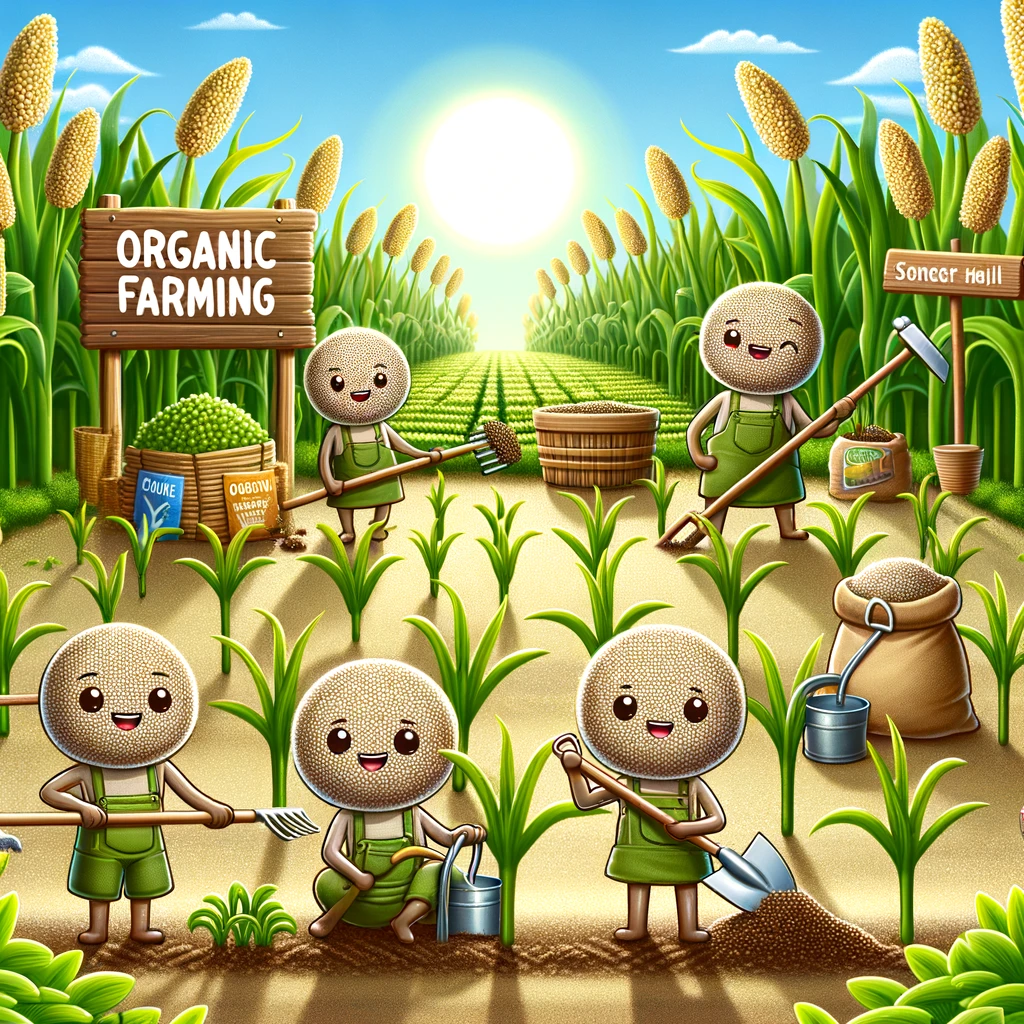Amid the global shift towards sustainability and health consciousness, India is witnessing a green revolution that marries traditional wisdom with modern agricultural practices. At the heart of this revolution lie two key players: millets, the ancient grains, and organic farming, the practice of cultivating crops without synthetic inputs. These sectors not only promise to redefine agricultural paradigms with their environmental and health benefits but also present untapped economic opportunities for the entrepreneurial community. Supported by an array of government initiatives, these sectors offer a fertile ground for innovation, growth, and sustainable development.
The Rise of Millets: Nutrition, Sustainability, and Market Potential
Millets, encompassing varieties such as sorghum (jowar), pearl millet (bajra), and finger millet (ragi), are acclaimed for their drought resistance, lower water requirements, and nutritional benefits. Their resurgence is driven by both their environmental resilience and their ability to meet the dietary needs of a growing population seeking gluten-free and nutrient-rich food options. The International Year of Millets in 2023, endorsed during the G20 meetings, marks a significant milestone, emphasizing the grain’s global importance for sustainable development and food security.
Government Backbone: Strengthening Millets and Organic Farming
The Indian government has been instrumental in promoting both millets and organic farming through visionary schemes. Initiatives like the Sub-Mission on Nutri-Cereals, Millet Missions, and the Production Linked Incentive Scheme aim to elevate millet production and innovation. Concurrently, the Paramparagat Krishi Vikas Yojana (PKVY) and the Mission Organic Value Chain Development for Northeastern Region (MOVCDNER) are revolutionizing organic farming, providing comprehensive support from production to marketing. These schemes underscore the government’s commitment to transforming India into a global leader in organic production and millet cultivation.
Entrepreneurs as Catalysts for Change
For entrepreneurs, the burgeoning sectors of millets and organic farming are ripe with possibilities. The strategic roadmap involves:

- Market Research and Niche Identification: Understanding consumer trends and identifying market gaps are crucial. Entrepreneurs can carve out niches in gluten-free products, plant-based proteins, and reinvented traditional cuisines.
- Product Innovation and Diversification: The development of a wide array of millet-based and organic products can meet the evolving tastes of health-conscious consumers. This includes exploring ready-to-eat snacks, beverages, and even cosmetic products enriched with millet extracts.
- Sustainable and Organic Practices: Leveraging the sustainability and organic badges can significantly enhance brand appeal. Organic certification, eco-friendly packaging, and minimal processing are key differentiators.
- Leveraging Technology: Innovation in agricultural practices, processing, and digital marketing is critical for scaling and reaching broader markets. E-commerce platforms and social media can drive brand visibility and consumer engagement.
Government Initiatives: A Closer Look
- Paramparagat Krishi Vikas Yojana (PKVY): This scheme promotes cluster-based organic farming with PGS certification, providing financial assistance up to Rs. 50,000 per hectare over three years, fostering organic farming components and practices.
- Mission Organic Value Chain Development for Northeastern Region (MOVCDNER): Focused on the Northeastern states, this scheme supports the development of Farmer Producer Organizations (FPOs), organic inputs, and certification, with a budget of Rs. 46,575 per hectare over three years.
These initiatives, coupled with the support for millet cultivation through various national and state-level schemes, create a comprehensive ecosystem for entrepreneurs to thrive.
Market Dynamics: Riding the Wave of Health and Wellness
The global health and wellness trend is a boon for millets and organic products. The demand for nutritious, gluten-free, and sustainably produced food is on the rise. This shift presents an excellent opportunity for businesses to innovate and cater to this growing segment. Entrepreneurs can tap into this trend by aligning their products with the values of health-conscious consumers, thereby opening up new markets and growth avenues.
Overcoming Challenges: Pathways to Success
Despite the promising outlook, entrepreneurs face challenges such as high certification costs, consumer awareness, and the transition period for conventional farmers. Overcoming these hurdles requires:
- Strategic Government and Private Sector Partnerships: Collaborations can provide the necessary support for certification and marketing, easing the financial burden on startups.
- Educational Campaigns and Consumer Engagement: Raising awareness about the benefits of millets and organic products can help in building a loyal consumer base.
- Innovation in Supply Chain and Distribution: Developing efficient supply chains and exploring new distribution channels, including online platforms, can enhance market penetration.
Conclusion: Millets and Organic Farming – The Future of Sustainable Agribusiness
The narrative of millets and organic farming in India is a testament to the power of combining traditional agricultural practices with modern ambitious spirit. As the country strides towards a sustainable agricultural future, these sectors offer a blueprint for the global community. Entrepreneurs, supported by robust government schemes and armed with innovative strategies, are set to play a pivotal role in this green revolution.
The journey ahead is not without its challenges, but the potential for growth, sustainability, and economic prosperity makes the venture into millets and organic farming a compelling proposition. As we embrace this transformative phase in agriculture, millets and organic farming emerge not just as solutions to today’s environmental and health challenges but as the keystones of tomorrow’s agribusiness landscape.
Also read: Make in India Initiative: Empowering India’s Rise as a Global Manufacturing Leader
